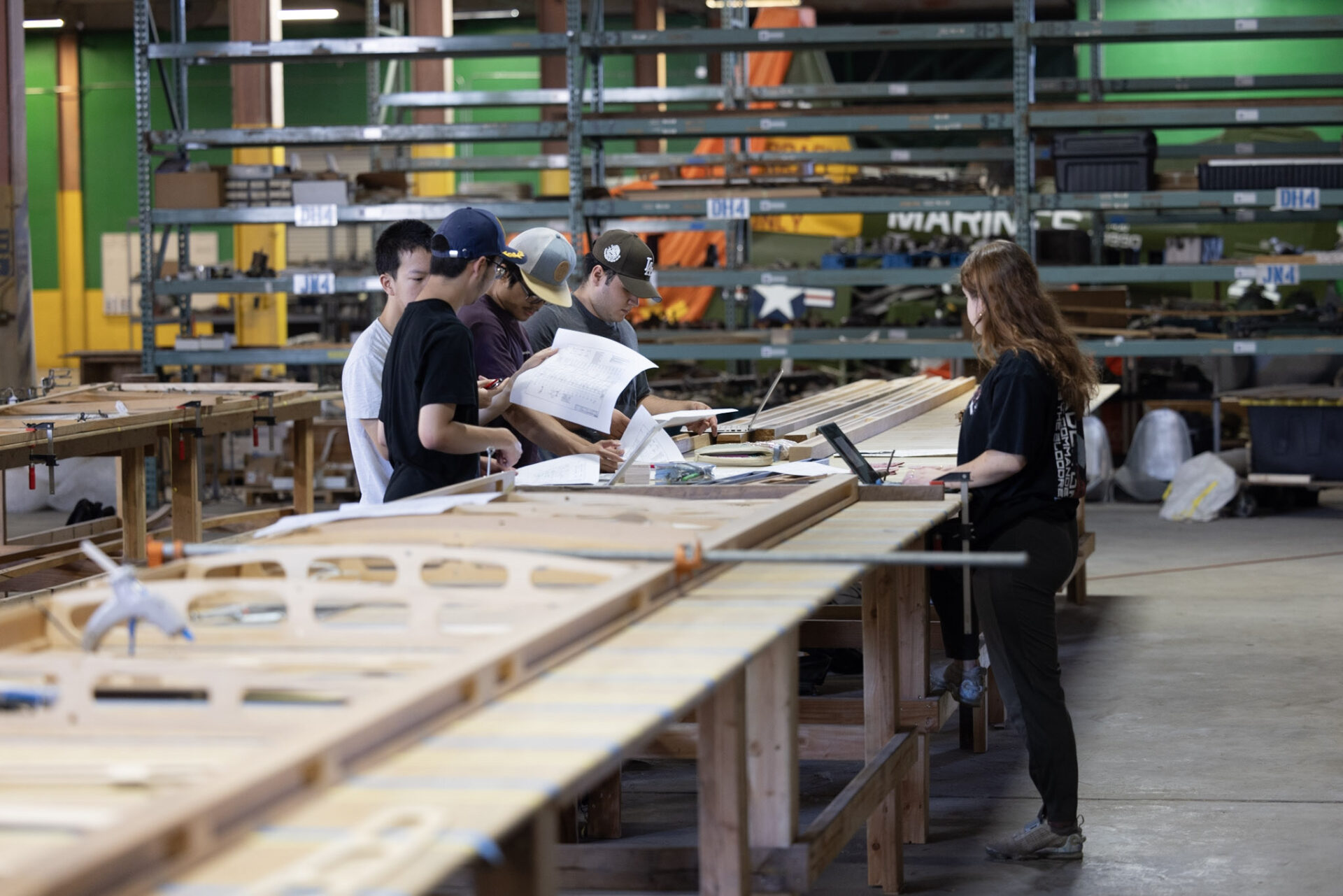UCI students have played an integral role since spring 2025 in the re-opening of the Flying Leatherneck Aviation Museum (FLAM), scheduled for late 2025 or early 2026. Senior mechanical engineering students Silvia Tinelli and Stuti Patel head the project in designing and constructing a replica of the World War I biplane Curtiss JN-4D, widely referred to as Jenny
The project, which will hang in the museum’s main entrance, enticed Tinelli immediately.
“I think that’s just a beautiful project in itself, so that was super appealing, and I said so many students are going to love this,” Tinelli told New University.
To build a replica biplane requires a great deal of planning and expertise; the aircraft must adhere to Smithsonian-grade standards. The design “must accurately represent the original aircraft in dimensions, appearance, and structure, down to the materials, methods, and finishes wherever possible,” stated the FLAM@UCI Design Projects website.
The Curtiss JN-4D, or Jenny, was unveiled in 1917 and trained U.S. Air Service throughout World War I. In the 1920s, Jenny was widely known for stunt shows —barnstorming — and mail-carrying.
The Flying Leathernecks — leatherneck being a colloquial term for a member of the U.S. Marines — hope to inspire pride and knowledge of aviation and military history, an aim the FLAM seeks to implement. Dedicated to United States Marine Corps aviation, the FLAM is the only such museum in the world. To date, it has over 40 aircraft in its collection. It is scheduled to reopen at Irvine’s Great Park in the coming spring.
The proximity and community connection helped UCI students to take an active role in Jenny’s restoration and the museum’s reopening. The team of students advised by faculty were compiled through an interest form.
“On the day Professor [David] Copp and the museum staff came for a tour, we happened to have our entire wing section on display,” Patel told New University. “When they saw it they immediately said, ‘This is exactly what we’re looking for.’ After discussions, Professor Copp selected Silvia and me to lead the Jenny restoration based on our project management experience. The moment I toured the hangar, I was hooked.”
After picking the team leads, subteams were established and approached a variety of tasks, including assembly, manufacturing and duplicating parts.
“We’re currently doing the bare bones assembly process. We’re main manufacturing the wings team is doing dry fit of the lower and upper wing, and since it’s basically duplicated in half, we can do one upper wing and one lower wing and then when you finish those, we can create the duplicates,” Tinelli said.
Manufacturing parts has proved to be a complex assignment. Though the team can build some wood and metal pieces at the hangar where the museum’s planes are stored, some of the parts need to be outsourced.
“UCI Engineering has allowed us to use their makerspace and Fabworks equipment. Ranging from 3D printers to laser cutters and even 3D scanners, anything we ask for, they have been willing to help us with,” Patel said.
Patel’s family has also helped with this role, specifically cutting many of the wood parts. Some pieces, though, must be manufactured through the CCI machine shop. Bigger pieces often cannot be done on-site.
The difficulty of absorbing and discerning blueprints, of which Canadian and American versions existed, proved another setback. Though it may seem like a subtle distinction, this posed a trying complication.
“We didn’t realize that we had so many Canadian [versions] and those parts do contradict with the rest of the plane that we’re trying to build. So being able to find replacement blueprints or being able to find more blueprints or plans that could just kind of fill in those gaps for us because we knew what we were missing based on like a bill of material and just inventorying it,” Tinelli said.
However, the team managed to surmount this when an FLAM member procured and sent copies of blueprints for all the planes in their collection.
Despite initial difficulties, progress continues and project leaders remain optimistic about Jenny’s successful completion.
“For the rest of the teams, they’re doing a wonderful job. I would say we were about 30% done. We’ve done a lot of the wood manufacturing, but just continuing with all those essential parts and wires that we need and trying to get it put together a little bit more,” Tinelli said.
As the project continues, students have had the opportunity to reflect on the benefits of management and team-building.
“I do love people management. I think that it is an absolutely crucial skill to all engineers. I think that in college, for sure, well, everyone, I think also applies to everyone,” Tinelli said.
Patel has also been moved by her role.
“This project has connected us with the aviation restoration experts, museum, professionals and experienced mechanics who have shared techniques you simply can’t learn in a classroom. We’ve learned to work with incomplete information, manage complex long-term projects, and build professional networks,” Patel said.
Those interested in the Flying Leathernecks, their mission and their museum, check out their website.
Aidan Wyrough is a Features Staff Writer for the fall 2025 quarter. He can be reached at awyrough@uci.edu.
Edited by Avery Rosas and Julia Kremenetsky


